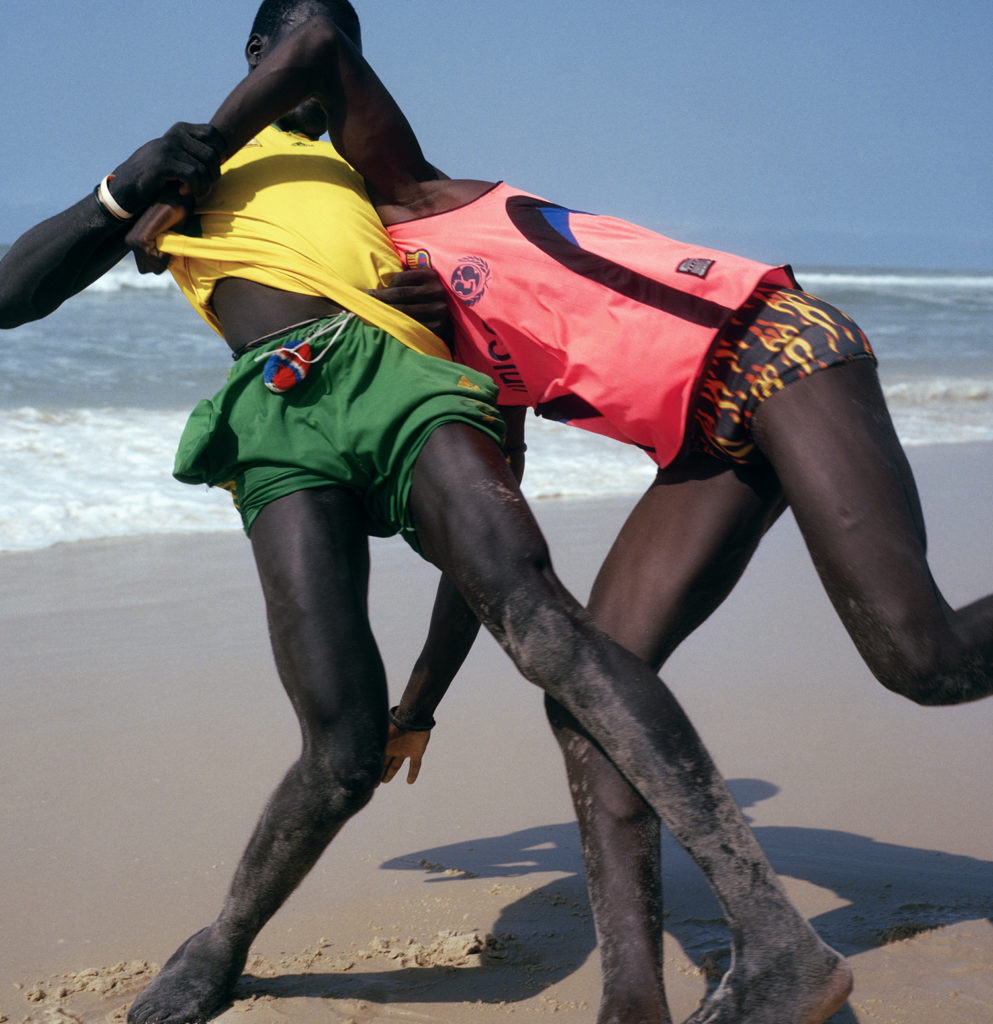ARTISTS Pieter Hugo, Chris Marker and Alain Resnais, Viviane Sassen CURATOR Robert Leonard
Shot in Africa, Vivianne Sassen’s Lexicon is ambiguous. Africa is a big, culturally diverse place, but the Dutch photographer never specifies where on the continent her photos were taken.
Sassen’s iconic but enigmatic images play on our expectations to wrong foot us. They are a strange alloy of the documentary and the directorial: some of her subjects look found, others staged. She shows us how people in other places live, the colours and textures of their environment, yet her images are also riddled with formal conceits. Some emphasise the vivid and vital, others feature coffins, body bags, and graves. On the one hand, they seem exotic, otherworldly, a bit National Geographic; on the other, her subjects are well dressed and urbane, cosmopolitan. Her views are never one thing or the other.
Lexicon draws on Sassen’s memories. For her, Africa was a formative experience. She spent three years of her early childhood in a remote village in Kenya, returning to the Netherlands with her family when she was five. ‘To me, Africa is vivid colours and strong contrasts of light and dark,’ she says. ‘I remember looking at women and children sitting under the trees sheltering from the sun and, even as a child, seeing these graphic shapes.’
Sassen is obsessed with the blackness of black skin. ‘It’s a more beautiful skin color,’ she says. ‘When I’m the only white person in a black society, I feel very nude. And when I see other white people in Africa, they’re white, pinkish, ugly, and sweating. I’m aware of the whole debate about my depicting black people in Africa as a white European woman, and of me being in control because I’m carrying the camera. But I'm not really interested in that debate, because for me the work comes from a very personal private place. When I’m in Africa, I feel like I’m coming home, yet I also feel like I’m not one of them.’
‘Africa’ is a loaded subject and Sassen’s work is haunted with issues about the representation of the exotic other. However, in the end, we can’t tell if the problem is hers or ours, whether the photographer is framing her subjects or her viewers.
In our show, Sassen’s Lexicon is accompanied by two films which also grapple with the dark continent.
Alain Resnais and Chris Marker’s 1953 essay film Statues Also Die begins as a study of the African art in Paris’s Musee de L’Homme, but turns into a critique of French colonialism. Heavily censored in France, the unexpurgated directors’ cut has only recently become available. Today, the film’s opposition of black and white seems quaint, simplistic.
By contrast, Pieter Hugo’s Control—a music clip for South African rapper Spoek Mathambo’s cover of Joy Division’s ‘She’s Lost Control’—revels in stereotypical images of South Africa: cemeteries and burning slums; minstrels, zombies, and voodoo. In reoccupying these negative images, is the Cape Town–based photographer redeeming them?

































